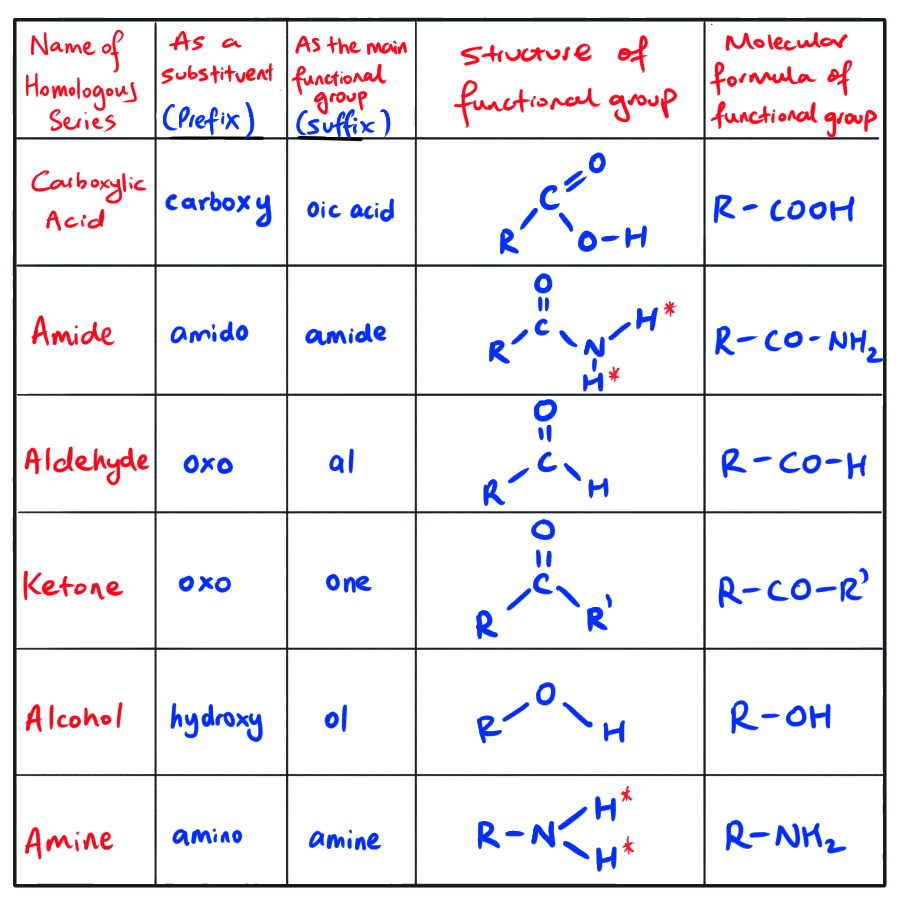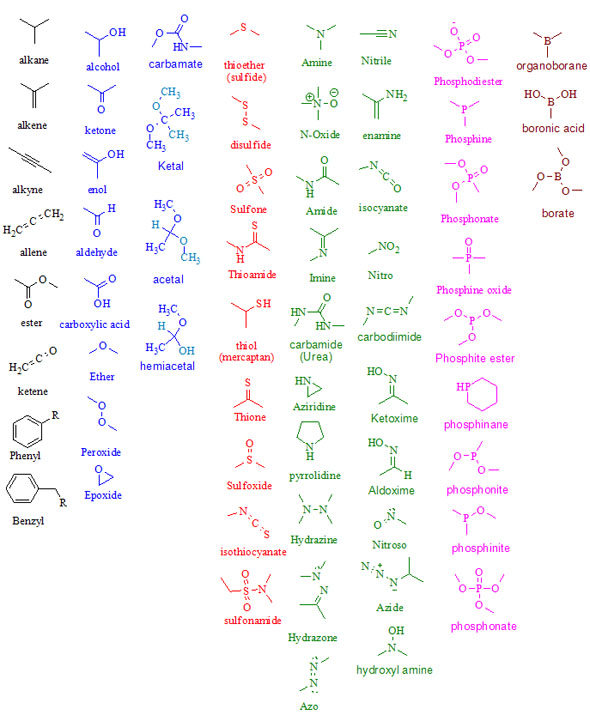
.png)
In an ether functional group, a central oxygen is bonded to two carbons. The deprotonated forms of alcohols, phenols, and thiols are called alkoxides, phenolates, and thiolates, respectively. The distinction is important, because as we will see later, there is a significant difference in the reactivity of alcohols and phenols. The compound below, therefore, is not a phenol - it is a primary alcohol. Note that the definition of a phenol states that the hydroxyl oxygen must be directly attached to one of the carbons of the aromatic ring. Alkyl halides groups are quite rare in biomolecules. Bromoethane is a simple alkyl halide often used in organic synthesis. Chlorodifluoromethane was used as a refrigerant and in aerosol sprays until the late twentieth century, but its use was discontinued after it was found to have harmful effects on the ozone layer. Chloroform is a useful solvent in the laboratory, and was one of the earlier anesthetic drugs used in surgery. When the carbon of an alkane is bonded to one or more halogens, the group is referred to as a alkyl halide or haloalkane. We will learn more about the structure and reactions of aromatic groups in chapters 2 and 14. Aromatic groups are planar (flat) ring structures, and are widespread in nature. The aromatic group is exemplified by benzene (which used to be a commonly used solvent on the organic lab, but which was shown to be carcinogenic), and naphthalene, a compound with a distinctive 'mothball' smell. As we will see in chapter 15, hydrogen can be added to double and triple bonds, in a type of reaction called 'hydrogenation'. The double and triple-bonded carbons in alkenes and alkynes have fewer hydrogen atoms bonded to them - they are thus referred to as unsaturated hydrocarbons. Alkanes are said to be saturated hydrocarbons, because the carbons are bonded to the maximum possible number of hydrogens - in other words, they are saturated with hydrogen atoms. In the example below, the difference between cis and trans alkenes is readily apparent.Īlkanes, alkenes, and alkynes are all classified as hydrocarbons, because they are composed solely of carbon and hydrogen atoms. The cis and trans forms of a given alkene are different molecules with different physical properties there is a very high energy barrier to rotation about a double bond. Furthermore, many alkenes can take two geometric forms: cis or trans. Ethyne, commonly called acetylene, is used as a fuel in welding blow torches.Īlkenes have trigonal planar electron geometry while alkynes have linear geometry. (If you want bananas to ripen quickly, put them in a paper bag along with an apple - the apple emits ethene gas, setting off the ripening process in the bananas).

Ethene, the simplest alkene example, is a gas that serves as a cellular signal in fruits to stimulate ripening. Octane, C 8H 18, is a component of gasoline.Īlkenes (sometimes called olefins) have carbon-carbon double bonds, and alkynes have carbon-carbon triple bonds. Methane, CH 4, is the natural gas you may burn in your furnace. The 'default' in organic chemistry (essentially, the lack of any functional groups) is given the term alkane, characterized by single bonds between carbon and carbon, or between carbon and hydrogen. Much of the remainder of your study of organic chemistry will be taken up with learning about how the different functional groups behave in organic reactions. For now, we will only worry about drawing and recognizing each functional group, as depicted by Lewis and line structures. The structure of capsaicin, the compound responsible for the heat in peppers, incorporates several functional groups, labeled in the figure below and explained throughout this section.Īs we progress in our study of organic chemistry, it will become extremely important to be able to quickly recognize the most common functional groups, because they are the key structural elements that define how organic molecules react. recognize and classify the common functional groups of organic chemistry (alkanes, alkenes, alkynes, alkyl halides, alcohols, amines, ethers, aldehydes, ketones, carboxylic acids, esters, and amidesįunctional groups are structural units within organic compounds that are defined by specific bonding arrangements between specific atoms.


 0 kommentar(er)
0 kommentar(er)
